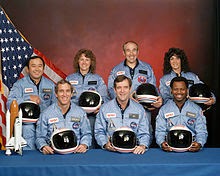Guest BLOG Post
User groups are groups that like to focus on technology, and
are one of the best traditions in modern computing. Both the illustrious Apple
and Osborne were founded by members who worked with the Homebrew Computer Club
that is located in Silicon Valley.
Every time that people come together to share information
and collaborate, it seems as though there is a rather large leap forward in
technological abilities. That is why taking time to act in one of these user
groups is both a great tradition and a way for you to recruit top talent at a
lower cost.
Finding A Group
If you are looking for a good user group, the best idea is
to focus on Meetup.com. They have a user base of about twenty million different
people with over two hundred thousand groups in nations all over the world. They
have incredible search features that make it very easy for you to find people
of a like mind and that also work in the same area as you.
If you have a mobile application, for example, and you want
to find a developer that can help launch the product, then you could search on
the site for a “mobile app development”, and then set a location for yourself
and see who is available to work with you.
If you happen to be near a major city and have an interest
in technology, there is an increased chance that you will have people available
to work with you. Make sure that you read all of the descriptions very
carefully so that there are no chances for miscommunication between all of you.
Always try to find the people that you think meet your expectations the best.
Planning Your Visit
Make sure that you take some time to read the biographies of
the individuals with whom you are going to work. There will be all manner of
people to choose from, but make sure that they fall within your ability to work
with both on a personal and financial level. Most people will also have a
photograph on their profile that you can use in order to match to their face so
that you can have an easier time confirming who they are.
At The Meeting
Many of the user groups start with the organizer of the
meeting asking if anyone would like to make an announcement. Use this as a
chance to introduce yourself and let it be known that you are looking for
someone to work with you on a project. Some of the attendees may come to see
you out as a result and will bring their expertise and want of a job to you,
saving you time and effort in locating an individual to work with you.
That is the ideal situation, where you have someone coming
to you rather than you having to go out and constantly seek workers for
yourself. You will get to look at all of the potential workers and see how they
interact with their peers around them. It is a very valuable perspective to
obtain before you ever sit down and interview with someone.
This is also a great way to find out who is the expert in
the room, or someone who is held in high esteem by everyone else. Watch the
body language of individuals in the room as different people get up to speak.
If everyone is suddenly paying attention during a person’s speech, there is a
good chance that everyone wants to hear them speak because they know what they
are doing and because they are viewed as important.
After The Meeting
When the meeting ends, there is usually a brief period of
time that has a social gathering available. This is your chance to mingle with
the crowd and find out what you are looking for in a collaborator. Do you want
a freelance worker to come back month after month? Let them know, and take the
names of everyone who might be interested in the position.
Always make sure that you have a business card that you can
hand out to people who might meet your needs but have other engagements, you
never know when they may pull your card out to help you. After all, that is
what these meetings are all about: networking and setting yourself up to be a
meaningful source of information and employment.
About the
Author: Mark Anderson is a software developer and small business owner that has
had great success recruiting talent at user group meetings. Read more about how
he does it at http://www.markandersononline.com.
~~~Bruce has worked in educational technology for over 18 years and has implemented several 1:1/BYOD programs. He also has served as a classroom teacher in Computer Science, History and English classes. Bruce is the author of five books: Sands of Time, Towering Pines Volume One:Room 509, The Star of Christmas, Philadelphia Story: A Lance Carter Detective Novel and The Insider's Story: A Lance Carter Detective Novel. Follow Bruce's Novel releases by subscribing to his FREE newsletter!
Be sure to check out Bruce's Allentown Education Examiner Page, his Twitter and his Facebook!






